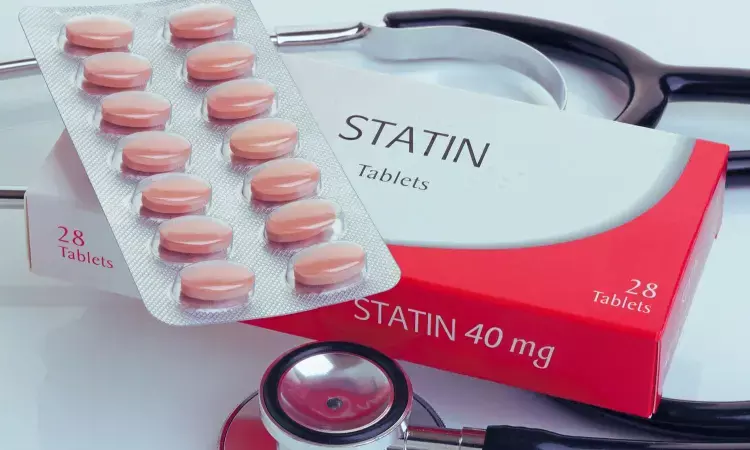- Home
- Medical news & Guidelines
- Anesthesiology
- Cardiology and CTVS
- Critical Care
- Dentistry
- Dermatology
- Diabetes and Endocrinology
- ENT
- Gastroenterology
- Medicine
- Nephrology
- Neurology
- Obstretics-Gynaecology
- Oncology
- Ophthalmology
- Orthopaedics
- Pediatrics-Neonatology
- Psychiatry
- Pulmonology
- Radiology
- Surgery
- Urology
- Laboratory Medicine
- Diet
- Nursing
- Paramedical
- Physiotherapy
- Health news
- Fact Check
- Bone Health Fact Check
- Brain Health Fact Check
- Cancer Related Fact Check
- Child Care Fact Check
- Dental and oral health fact check
- Diabetes and metabolic health fact check
- Diet and Nutrition Fact Check
- Eye and ENT Care Fact Check
- Fitness fact check
- Gut health fact check
- Heart health fact check
- Kidney health fact check
- Medical education fact check
- Men's health fact check
- Respiratory fact check
- Skin and hair care fact check
- Vaccine and Immunization fact check
- Women's health fact check
- AYUSH
- State News
- Andaman and Nicobar Islands
- Andhra Pradesh
- Arunachal Pradesh
- Assam
- Bihar
- Chandigarh
- Chattisgarh
- Dadra and Nagar Haveli
- Daman and Diu
- Delhi
- Goa
- Gujarat
- Haryana
- Himachal Pradesh
- Jammu & Kashmir
- Jharkhand
- Karnataka
- Kerala
- Ladakh
- Lakshadweep
- Madhya Pradesh
- Maharashtra
- Manipur
- Meghalaya
- Mizoram
- Nagaland
- Odisha
- Puducherry
- Punjab
- Rajasthan
- Sikkim
- Tamil Nadu
- Telangana
- Tripura
- Uttar Pradesh
- Uttrakhand
- West Bengal
- Medical Education
- Industry
High-dose statin therapy reduces MACE risk in stable CAD patients with high cardiac troponin levels

The study, published in the International Journal of Cardiology on 22 June 2023, found that in the low-dose statin group, patients with high hsTnI levels had high MACE risk but not in the high-dose.
N-terminal pro-brain natriuretic peptide (NT-proBNP) and High-sensitivity cardiac troponin-I are well-known diagnostic markers of cardiovascular diseases (CVDs). These biomarkers could be of use for the risk stratification of CAD patients. Previous studies have reported that statin therapy is consistently effective for MACE reduction compared with placebo, regardless of hsTnI and BNP concentration. However, no reports have investigated a relationship between MACE and cardiac biomarkers in different statins doses.
Therefore, Yoshiaki Mitsutake, Kurume University School of Medicine, Kurume, Japan, and colleagues aimed to determine whether baseline hsTnI and NT-proBNP could predict future MACE in stable coronary artery disease patients treated with high- and low-dose of pitavastatin in the REAL-CAD sub-study.
For this purpose, the team performed a case-cohort analysis of the REAL-CAD study, a randomized trial of high-or low-dose (4 or 1 mg/day) pitavastatin therapy in stable CAD patients. They examined the MACE risk using the baseline quartile of hsTnI and NT-proBNP.
A total of 1336 and 1396 patients, including 582 MACE cases, were randomly examined in the hsTnI and NT-proBNP cohorts.
The analysis revealed the following findings:
- Both higher levels of hsTnI and NT-proBNP at baseline were significantly associated with an increased risk of MACE.
- When separately analyzed in statin dose, the higher marker levels were significantly associated with higher MACE risk in all cohorts.
- After multivariable adjustment, hsTnI levels were significantly associated with MACE risk in the low-dose statin group (HR 2.54); however, in high-dose pitavastatin therapy, a significant association was diminished in MACE risk among the quartiles of baseline hsTnI levels.
- Conversely, in the NT-proBNP cohort, the association between NT-proBNP levels and MACE risk was constantly observed regardless of pitavastatin dose, even after multivariable adjustment.
Both hsTnI and NT-proBNP were valuable markers for risk stratification of patients with stable CAD who commonly received low-dose pitavastatin therapy.
"In the low-dose statin group, patients with higher hsTnI levels had a higher MACE risk," the authors wrote. "In the high-dose pitavastatin group, there was no significant difference in MACE risk according to hsTnI levels. Higher NT-proBNP levels were constantly tied to higher MACE risk irrespective of pitavastatin dose."
"These results indicate that high-dose statin therapy might decrease MACE risk in stable CAD patients with high hsTnI levels," they conclude.
Reference:
Mitsutake, Y., Ishii, J., Fukumoto, Y., Ito, S., Kashiwabara, K., Uemura, K., Matsuyama, Y., Sugiyama, Y., Ozaki, Y., Iimuro, S., Iwata, H., Sakuma, I., Nakagawa, Y., Hibi, K., Hiro, T., Hokimoto, S., Miyauchi, K., Daida, H., Shimokawa, H., . . . Nagai, R. (2023). Differential prediction of high-sensitivity cardiac troponin-I, but not N-terminal pro-brain natriuretic peptide, in different pitavastatin doses on cardiovascular events in stable coronary artery disease. International Journal of Cardiology, 131138. https://doi.org/10.1016/j.ijcard.2023.131138
Dr Kamal Kant Kohli-MBBS, DTCD- a chest specialist with more than 30 years of practice and a flair for writing clinical articles, Dr Kamal Kant Kohli joined Medical Dialogues as a Chief Editor of Medical News. Besides writing articles, as an editor, he proofreads and verifies all the medical content published on Medical Dialogues including those coming from journals, studies,medical conferences,guidelines etc. Email: drkohli@medicaldialogues.in. Contact no. 011-43720751


